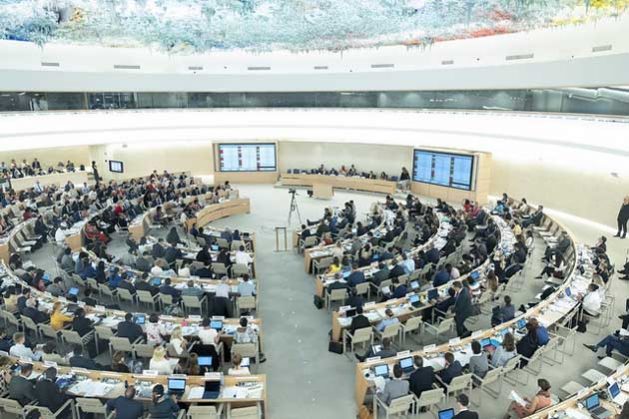Most of India’s rural solar systems no longer work due to poor maintenance
A cautionary tale for a world racing into renewables: The large majority of mini-grids in India no longer work, an environmental group found
But maintaining these solar systems has proved to be more than the government can handle, leaving deserted panels and batteries far and wide.
India’s experience is a cautionary tale for a world that is racing into renewables, installing solar energy systems at a breakneck speed with scant planning for how to maintain them in the years to come.
“We are rushing to find solutions. I don’t think we are thinking through the unintended consequences of the solutions that we are promoting at this time,” said Anurag Danda, a director in the World Wide Fund for Nature in India. “We might be creating a second-order problem — fixing something here, but creating a problem somewhere else.”
About 4,000 solar mini-grids have been installed in India, of which 3,300 are government financed and owned, according to information collected early this year by Smart Power India, a subsidiary of the Rockefeller Foundation, and provided to The Washington Post. Only 5 percent of the government grids are operational, the group found.
With much publicity, the eastern state of Bihar launched its first “solar village” in 2014. By 2021, Mongabay-India reported that the village’s power station had been turned into a cattle shed. A study by Aviram Sharma, a university researcher in Bihar state, found that almost half of the village’s solar connections went out of use within two years. According to another report, by Mongabay-India, the first solar village in the nearby state of Odisha met a similar fate.
“There is a lot of sunken cost for the deployments which are not working,” said Abhishek Jain, a fellow and a director at the Indian think tank the Council on Energy, Environment and Water. “It’s a waste of public and philanthropic money — mainly because we didn’t manage the technology well.”
The equipment that has been installed is a combination of domestically produced and imported, primarily from China.
In Barbera, a remote hamlet of 300 Indigenous people in Jharkhand state hemmed in by railway lines and water channels, rows of solar panels stand out against the bright-green paddy fields. The blue sheen of the panels has faded with time, and the glass has been cracked for several years. Shrubs blooming with pink and yellow flowers are reclaiming their place amid the ruin.
The system, installed in 2017, worked for one or two days and then stopped, according to several local residents. The state’s renewable-energy authority confirmed that the grid was defunct.
“What will we do with this useless solar?” asked Salasuis Burh, an elderly man standing near the remains of the solar system, an array of panels looking like rows of resting dominoes. “We want real electricity.”
Young village boys have rejiggered the wires so a few phones at a time can be charged. The solar panels still generate energy, but the batteries to store the electricity and the network to distribute it no longer function.
India is not alone in facing the challenge of solar power maintenance. Nor is the issue a new one.
A team of Dutch researchers reported in 2017 that in a sample of 29 solar systems in sub-Saharan Africa, only three were fully working. “The reasons cited for failure always point to the same challenges: an absence of local maintenance expertise and a lack of acceptance,” researchers said in an article published by the Conversation.
An Indian solar expert, who spoke on the condition of anonymity to share closed-door conversations, said that the Ugandan government is seeking international help because 80 percent of its 12,000 local solar connections in health-care centers are out of service. Journalistic reports from Nigeria depict a similar situation.
“If you look at our landfills at a global scale, this will lead to a … problem. The toxic material can leech out. And, wherever the panel is sitting, that piece of land will be wasted,” said Danda, of the World Wide Fund.
Danda had set up solar projects in the Sundarbans, a vast mangrove forest in West Bengal state, just as decentralized solar power was taking off in the 1990s. Of the 12 projects his team had installed, he said, only three are operating. Mongabay-India found that at least another dozen solar systems in the Sundarbans have been abandoned.
Danda said the problems began cropping up after five years, when the batteries used to store the solar-generated power needed to be replaced for the first time. Two of his solar battery charging stations completely disappeared, probably lost to theft, he said. Other systems went to waste because of neglect as the conventional electricity grid reached the area.
About 20 miles away from Barbera, a man carving a plow out of wood in the village Semariya complained that the mini-grid could light only a single bulb. A fallen tree was resting on an electrical wire connected to the solar plant. In the market, a solar street lamp was covered with cobwebs. Around the corner, students ate lunch under a solar grid that had been bent out of shape over the years, with several panels missing.
Even in Jharkhand’s capital, Ranchi, the solar roof panels at Ranchi University all were observed during a recent visit to have problems.
“The intent is there, but instead of solving a problem for the community, are we creating a problem for the community?” Jain asked.
In Jharkhand, at least 90 percent of the state’s more than 200 mini-grids are defunct, according to a consultant for the renewable-energy authority, who spoke on the condition of anonymity to comment freely about the mini-grids.
“Installing a plant is easy,” said Mukesh Prasad, an executive engineer in Jharkhand’s renewable-energy authority who is responsible for the mini-grids. “But there is no doubt that maintenance remains the difficulty. There are abandoned mini-grids.” He blamed a lack of local technicians and difficulties in obtaining spare parts.
“How will villagers trust us when it breaks down and there is no one to fix it? Why would they trust us?” Prasad asked.
Solar-power advocates and technicians say community distrust makes it harder to keep the systems up and running. Jain said he often hears local residents say that they “don’t need this baby grid or fake grid.”
He added that the government relies on private contractors for installation and maintenance but that the contractors often do not find it economically worthwhile to service the solar systems. Jharkhand, for example, holds onto 10 percent of the contract price after installation and releases the balance in annual installments to pay for maintenance. But this sum may not cover the cost of traveling to remote areas, so the technical crews often desert their contracts after installation.
Moreover, the government, in trying to keep electricity affordable for its customers, often lacks the revenue needed to pay for upkeep. Private providers have a better record in maintaining the systems because their revenue models are stronger.
“It’s not just creating the asset. It’s also looking at the entire life cycle of the asset,” said Vijay Bhaskar, the managing director of solar-energy company Hamara Grid. Over the life of the equipment, the business model often does not pay, he said.
Check out our Latest News and Follow us at Facebook
Original Source








